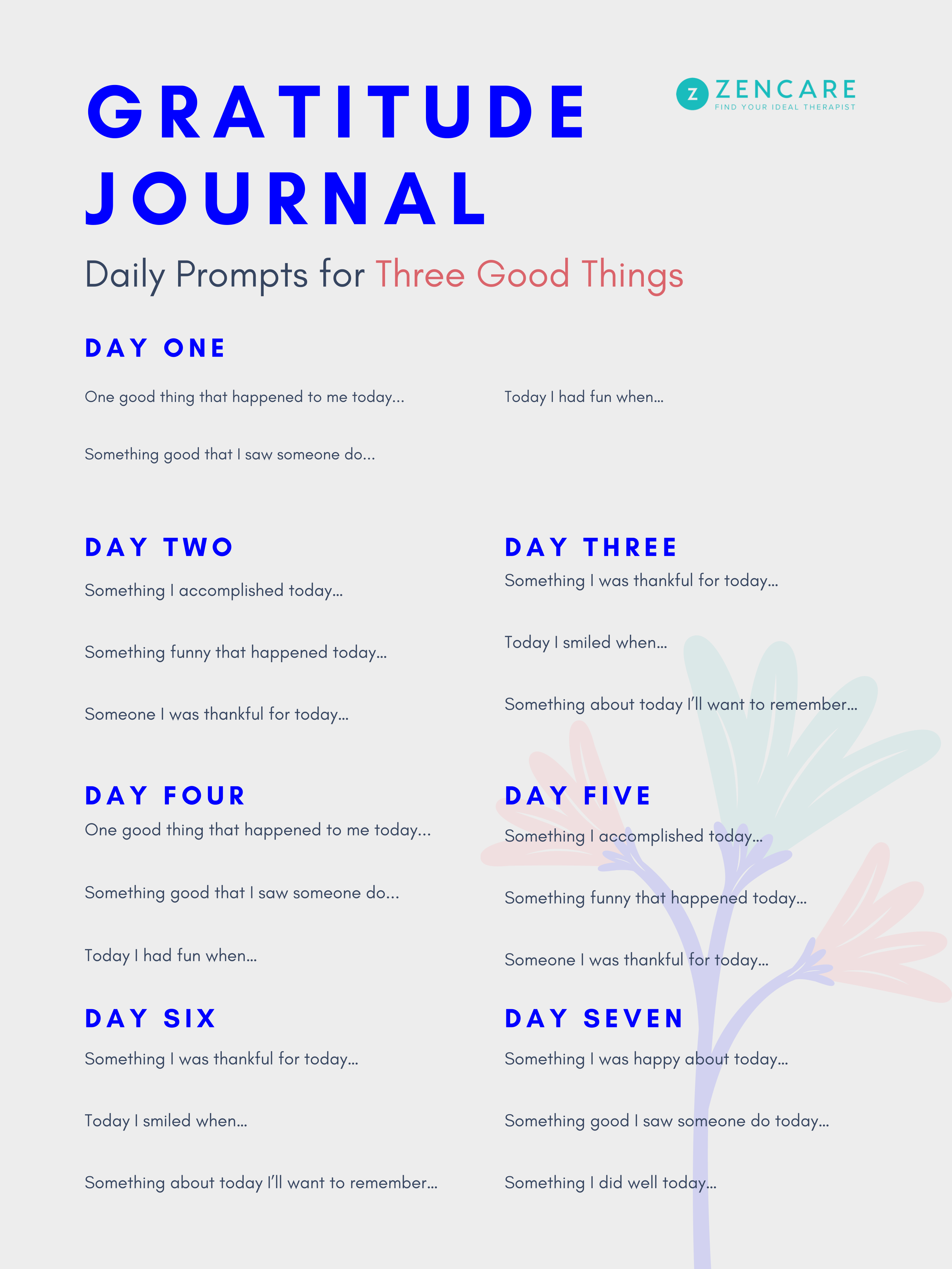Thanksgiving. It’s not just an American holiday celebrated with stuffing and pumpkin pie – it’s also a practice shown to enrich psychological well-being and increase happiness.
Giving thanks and expressing gratitude on a routine basis places your attention on the good things in your life, promoting positivity and decreasing the stress of the negative. Making a practice out of gratitude can even boost physical health via stress reduction! Gratitude journals are a simple and powerful way to create such a practice. Read on to learn more about this amazing tool.

1. Decide what form your gratitude journal will take
Search for “gratitude journal” online, and you’ll find hundreds of images of cute notebooks styled with perfect calligraphy. Whether your notebook is sparkly, colorful, flowery, or plain, the potential that it holds to promote happiness in your life remains the same. A gratitude journal is any form of recording what you are grateful for every day. It can be a physical notebook or it can be a note on your phone, as long as you have the ability to write down the things (at least three!) that you appreciated from your day.
Your gratitude journal should be something easily accessible for your lifestyle. What type of record-keeping fits into your daily life? While taking a few minutes of your day to reflect and write out what you’re grateful for is a key component of maintaining a gratitude journal, it shouldn’t be so burdensome that you aren’t inclined to write every single day.
Gratitude journals look so many different ways, yet ultimately they create a time and space for you to think about what you’re thankful for and put that sentiment into words.
2. Browse different prompts that inspire you to get started
As with many types of journals or records, it can be daunting to start a gratitude journal. Once you’ve decided what type of gratitude journal you’re keeping, set a time every day dedicated to jotting down your thoughts. This makes reflection on your gratitude a habit – a habit to pay attention to the joys in your life and pay them appreciation through your writing.
If you have trouble figuring out what to write each day, try out these prompts:
- What made me happy today?
- What brought peace or clarity to me today?
- Who did I speak with today and how was it meaningful?
- What am I excited about today?
- Did someone do something nice for me or someone else today?
- How does my body feel today?
- What did I get lost-in-thought about today?
- When did I smile or laugh today? Why?
- What did I accomplish today?
- What am I proud of today?
Using prompts to jumpstart your journaling can help you avoid the writer’s block that so many people experience. You can write about something that happened, something someone said, a feeling you felt, a thought you had – anything, really.
3. Focus on finding at least three "good things" per day
Finding three good things – things that you’re grateful for – is key for maintaining a gratitude journal. While three things seems a bit arbitrary, setting the expectation that you’ll list at least three ensures you won’t stop after just one.
Even on your bad days, putting down three things that you’re grateful for boosts the amount of time spent considering what brings you happiness, which promotes positivity and feelings of well-being.
In selecting your three things, consider your day’s activities, interactions, and physical and mental space. Soon, you will start to recognize patterns in what makes you happy or feel joy.
You might also become aware of your gratitude in-the-moment, not just when you sit down to write in your gratitude journal. Learning what makes you feel gratitude is a huge step in self-awareness and might lead you to cultivate more of your “good things” into your life.
If you want to list out more than three things, that’s great, too. Don’t limit yourself to three, but make sure that your list is at least three each day.
4. Consider starting a gratitude journal process with loved ones, too
Writing out what you’re grateful for about your partner or family is a great way to show your appreciation, even in difficult times. It also gives you a focus to see the person’s good traits and behaviors. For some people, it’s difficult to directly give or receive compliments. However, if both or all of you maintain a gratitude journal, sharing those personal appreciations weekly or monthly becomes one step easier.
How did that person show their love for you today? What did that person do that made you happy, laugh, or smile? What memories do you have with this person? What was the best part of your day together and why? These are all questions you can ask yourself when generating the three things you feel grateful for in your partner or family member.
If you don't want to share, know that even keeping those thoughts private has benefits, as long as you’re writing them out each day and making a habit of singling out what you appreciate in that person. The importance of a gratitude journal is placing your attention on the positive things in your life that make you feel happiness.
Whether you’re journaling for yourself or to grow your relationship with someone, writing out three things that you’re grateful for every day is a habit that will nurture positivity in your life. Don’t forget to thank yourself for building this new habit and for taking the time to notice and appreciate the good in your life!
